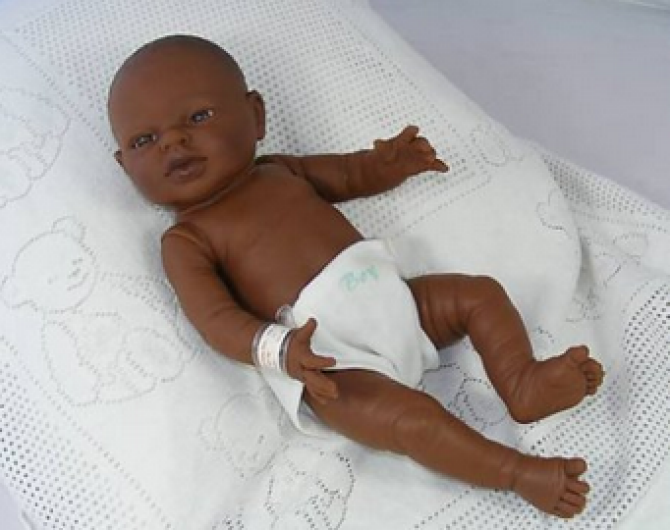[ad_1]

Tamir Rice’s beyond tragic death has exposed painful assumptions that seem hard-wired into the (white) American psyche about black children. The video sequence of Rice’s killing has been read in a variety of ways. About what could be seen on the video, a Cleveland prosecutor said, “Tamir was big for his age — 5-foot-7 and 175 pounds, with a men’s XL jacket and size-36 pants — and could have easily passed for someone much older.”
Moreover, as reported by the Washington Post “research published last year by the American Psychological Association found ‘evidence that black boys are seen as older and less innocent and that they prompt a less essential conception of childhood than do their white same-age peers.’”
Another video is circulating online that has received far fewer views than that of Tamir Rice’s death but also illuminates how we think about childhood, race, and ultimately violence.
Two little red-haired white girls are opening gifts on Christmas morning. A woman (presumably the mother, only a voice off-camera) hands the girls a large gift bag and says, “This is from Uncle Seth and Aunt Cynthia. Go ahead, open it.” The younger of the two girls, who appears to be around two, is sitting on the floor and takes the bag, begging to open it in her sweet baby voice. She pulls out two baby dolls—black baby dolls.
The woman says, “Give Rainie (sp?) hers. Give Rainie hers.” Rainie, an older child, is standing and takes the doll. She looks at it with a shyly bemused expression, shows the doll quickly to the camera, and turns away.
Mother: “What’s wrong?”
Mother: “Do you like it?”
The woman lets out a suppressed laugh, turns the camera to the younger girl, and says, “Do you like it, Regan?” Regan begins to wail and shakes her head no. The woman says, in a high, beseeching voice, “Why? What’s wrong?”. Regan continues to cry and throws the doll in front of her. There’s laughter from what sounds like a second woman. As the laughter continues, the camera pans to the older daughter who remains silent, gives a little smile, and shrugs.
People who commented on the video posted on a friend’s Facebook feed were horrified (a horror I shared), and not because they were worried about Uncle Seth and Aunt Cynthia seeing their gifts disparaged. They questioned how the mother could post such a reaction to YouTube; they said that the laughter of the woman was disgusting and a source of shame itself. But would someone who finds humor in the reaction be ashamed of it? Not likely. In fact, it’s not a stretch to hear the mother as goading that reaction from her younger daughter. The older girl politely accepts the gift. It is the younger girl who wails and throws the doll, after she has heard her mother laugh and after she says, “What’s wrong?” in a voice adults recognize as feigning surprise and solicitousness. But her own laughter has already indicated to the little girl (and to the viral viewer) that this gift is terribly wrong.
Are Uncle Seth and Aunt Cynthia racists who decided to have a little fun at their nieces’ expense, knowing that they would find a supportive audience in the mother? Are they social psychologists stepping in for Kenneth and Mamie Clark, to see how two white girls would react to the color of the dolls in a new doll test? Maybe they just liked the dolls, or maybe they wanted to diversify the girls’ collection. We don’t actually know what prompts the mother’s laughter or the little girl’s reaction, but both history and current events suggest that neither the laughter nor even the wail is racially innocent, to adapt a term from the scholar Robin Bernstein.
In both the stomach-churning video of the girls and the heart-rending death of Tamir Rice, blackness is seen as remote from childhood as childhood is presumptuously defined as white: the mean, goading laughter teaches the girls that white children don’t want black baby dolls, and white juridical America, building on the endless loop of that education, doesn’t believe that black children are even children at all.
Hence, a twelve-year-old was seen as an adult, his play was perceived as a threat, and a child is dead.
Lifelessness should belong only to a doll, not to a boy who should still be living and breathing.
Abby Wolf is the executive director of the Hutchins Center for African & African American Research at Harvard University. She has written about 19th- and early 20th-century representations of childhood in literature and holds a Ph.D. in English from Harvard.
[ad_2]





















